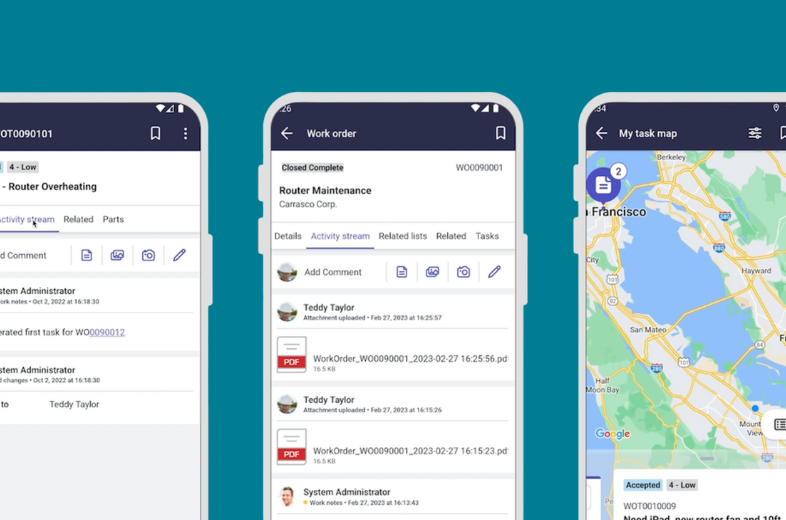Salesforce Data Cloud: Get to Know Salesforce’s Data Warehouse Solution

Published Date
Managing and analyzing large amounts of data is a challenge nearly every company faces. That’s why data warehouse solutions have become increasingly popular as companies look for data management solutions. A data warehouse, also known as an enterprise data warehouse, is a central repository of data from one or more sources data sources, like a CRM or ERP, that can be analyzed to make more informed business decisions.
One of the leading data warehouse solutions on the market is Salesforce Data Cloud. Data Cloud allows users to stream input data from Salesforce and other sources, normalize it and generate reports and insights. Plus, Data Cloud’s Unified Profile feature allows users to deduplicate data intelligently for an accurate and complete view of customers.
If you’re wondering how Salesforce Data Cloud can help your organization become more agile and efficient, continue reading to better understand Data Cloud and learn how to get the most out of a data warehouse solution.
What is Salesforce Data Cloud?
Salesforce Data Cloud is a powerful data warehouse solution that allows companies to effectively manage and analyze their data. It provides users with the ability to stream input data from Salesforce and other sources, making it a comprehensive platform for data integration. This means that businesses can seamlessly collect data from multiple channels and have a centralized repository for all their information.
One of the key features of Salesforce Data Cloud is its ability to transform and normalize data. It allows users to map data to standardized models, ensuring consistency and accuracy. This data transformation process is crucial for generating meaningful insights and making informed decisions. Another notable aspect of Salesforce Data Cloud is its data actions functionality. With this feature, users can take action on their data, such as triggering automated workflows or sending notifications based on specific data conditions. This allows businesses to streamline their processes and improve overall efficiency. Finally, the unified profile feature of Salesforce Data Cloud enables users to deduplicate their data. This means that duplicate records can be identified and merged, ensuring data accuracy and eliminating redundancies.
Benefits of Using Salesforce Data Cloud as a Data Warehouse Solution
The entry point to Data Cloud is its Data Streams, which can seamlessly stream input data from Salesforce and other sources, creating a centralized Data Lake for all your input data. Salesforce Data Cloud allows you to integrate data from various sources, such as customer interactions, sales transactions, service history and marketing campaigns. This makes it easier for you to collect data from multiple channels and have a comprehensive view of your data landscape.
Next is its ability to transform and normalize data. With its data mapping and transformations features, you can easily map your data to standardized data models, ensuring consistency and accuracy. Mapping data to normalized models involves defining how data should be structured and organized, ensuring that each data point is represented in a consistent and meaningful way. This means that you can generate meaningful insights and make informed decisions based on reliable data.
Data Actions and Calculating Insights with Salesforce Data Cloud
Taking action on data as it arrives and calculating insights are essential steps in leveraging the power of Salesforce Data Cloud as a data warehouse solution. With its data actions functionality, you can automate workflows and trigger notifications based on specific data conditions.
By utilizing data actions in Salesforce Data Cloud, you can take proactive measures based on real-time insights. For example, you can set up automated workflows that send notifications to sales representatives when a customer reaches a certain purchase threshold. This enables your team to promptly follow up with potential leads and capitalize on sales opportunities.
Additionally, data actions allow you to create alerts for any unusual data patterns or anomalies. By setting up notifications, you can promptly address any potential issues or errors in your data. This helps maintain data accuracy and ensures that you are making informed decisions based on reliable information.
Calculated Insights is another important aspect of using Salesforce Data Cloud. The platform provides powerful analytics capabilities that allow you to uncover patterns, trends, and correlations in your data. By leveraging these streaming and aggregated insights, you can make data-driven decisions that drive business growth and success.
Understanding the Unified Profiles for Deduplication
Duplicate data can be a major headache for businesses, leading to inefficiencies, inaccuracies, and wasted resources. That’s where the Unified Profile feature of Salesforce Data Cloud comes in. This powerful functionality allows users to deduplicate their data, ensuring data accuracy and eliminating redundancies.
How do Unified Profiles work in Data Cloud?
Essentially, it combines data from different sources and identifies duplicate records based on unique identifiers such as email addresses, fuzzy logic for matching names, or unique customer identifiers. Once duplicates are identified, the Unified Profile feature allows users to merge these records into a single, unified profile. This ensures that businesses have a complete and accurate view of their customers or data sets.
The Unified Profile feature also provides options for resolving conflicts in data, such as conflicting information in duplicate records. Users can define rules and preferences for how these conflicts should be resolved, ensuring consistency and accuracy in their data.

Exploring Reporting Options with Salesforce Data Cloud
Reporting is a crucial aspect of data analysis, as it allows businesses to derive insights and make informed decisions based on their data. With Salesforce Data Cloud, you have a variety of reporting options to explore and leverage.
One of the reporting options available in Salesforce Data Cloud is its native reporting capabilities. The platform offers a user-friendly interface that allows you to create and customize simple reports according to your specific needs. These reports are integrated in with standard Salesforce Reports and Dashboards, ensuring ease of use and on-boarding.
Another reporting option in Salesforce Data Cloud is the ability to integrate with more advanced third-party reporting and analytics tools like Tableau. From inside Data Cloud you can download Tableau connector definitions and easily connect and analyze all of your Data Cloud data including Data Lake Objects, Data Model Objects, Calculated Insights and Unified Profiles.
Getting Started with Data Cloud just got easier!
At Dreamforce 2023, Salesforce unveiled an exciting development – a free license for Data Cloud (including Tableau!) available to all Enterprise and Unlimited Edition Customers. This free license allows up to 1,000 users to access Data Cloud and explore its capabilities.
Bolt Data is committed to helping Salesforce customers harness the potential of Data Cloud. Get in touch with us today to get started with Data Cloud with a free strategy call to understand your data needs and discover use cases.


.png)

